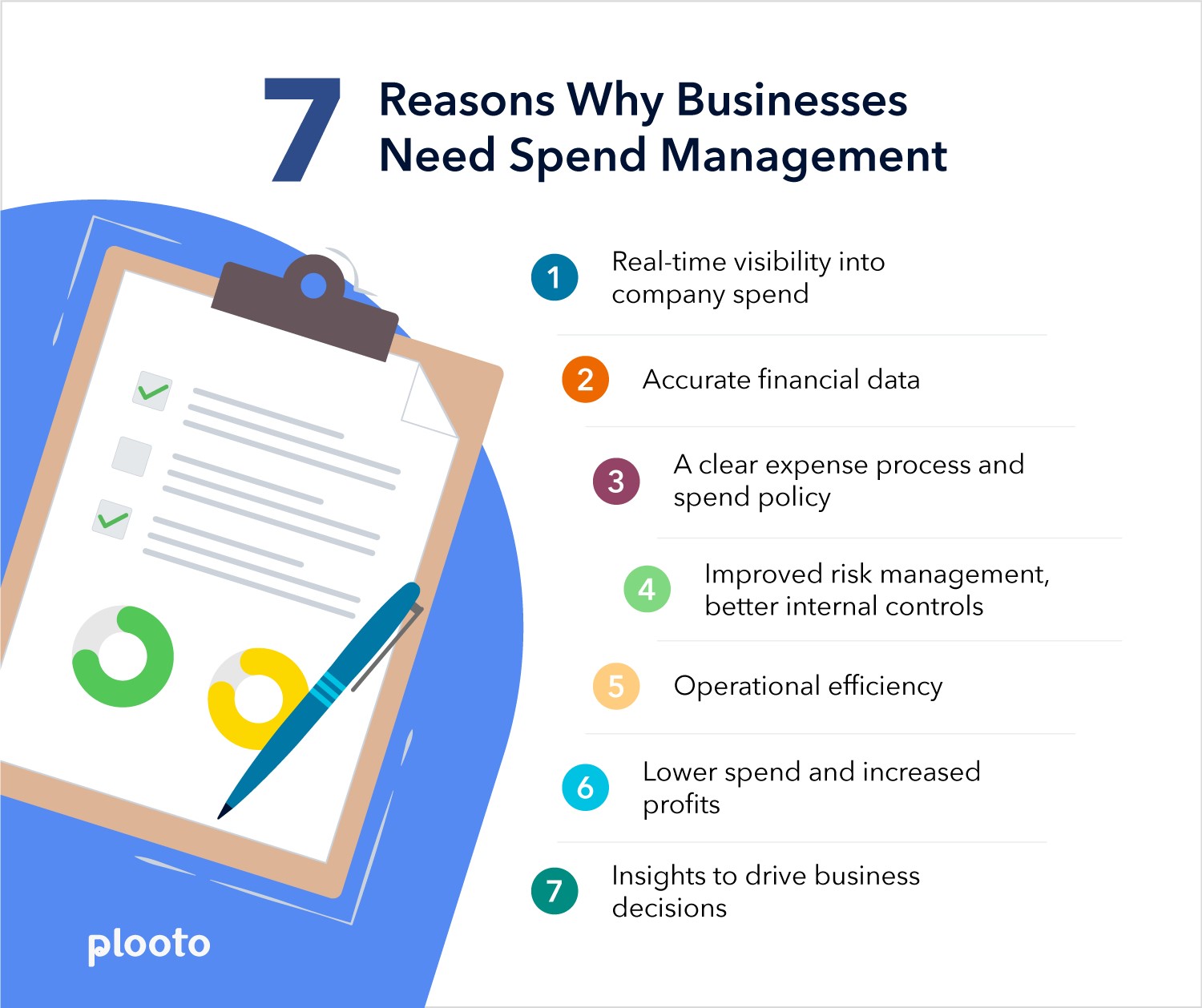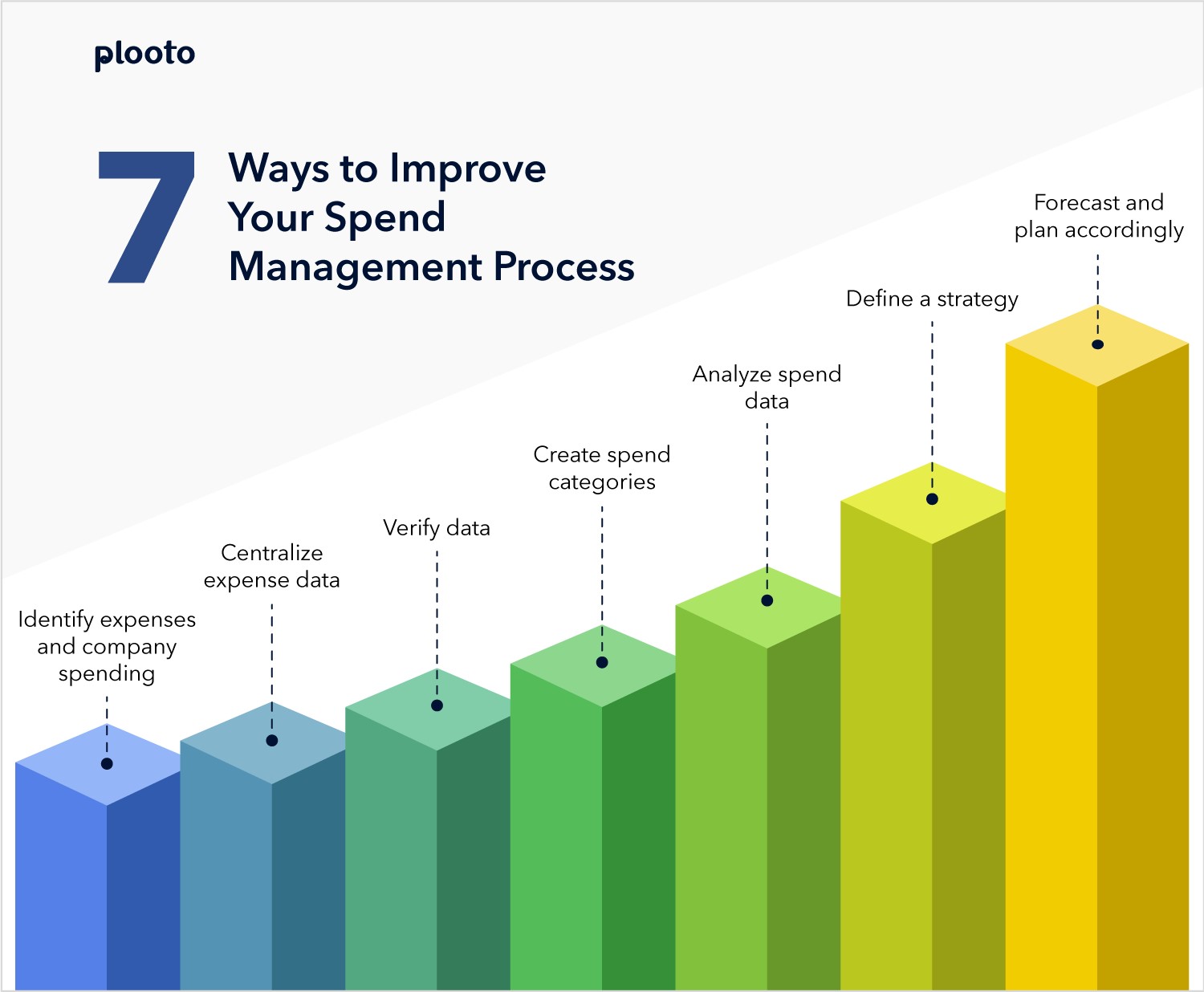
Few activities in business have as much impact in reducing costs, eliminating waste, detecting fraud, and improving the bottom line than spend management. It is the foundation for operational efficiency, cost containment, and visibility throughout the company.
“Unlock the Power of Spend Management: A Guide for Small and Mid-Size Businesses” shows how your business can overcome some of the biggest challenges facing small to mid-size businesses (SMBs) today:
- Improving cash flow
- Controlling costs by having complete transparency over the entire purchase cycle
- Deciding when and where to expand and invest
- Ensuring product and service quality
- Reducing risk
- Identifying inefficiencies and areas of loss in the company and correcting them
Sign up for a Free Trial today
Key Takeaways
- How spend visibility can improve your bottom line, eliminate waste, and detect fraud
- 20 benefits of effective spend management
- Why spend management is crucial to the success of fast-growing companies
- 7 steps to creating an effective spend management process
- What it takes to build and implement a strategic spend management plan
- 8 spend management best practices
- How technology is transforming spend management
SHORTCUTS
- Understanding Business Spend Management (BSM)
- Why do you need a spend management process?
- What is spend analysis?
- How to build and implement a strategic spend management plan
- Useful tools for Spend Management
- Boosting efficiency with automation: How technology is transforming spend management
Understanding Business Spend Management (BSM)
What is spend management?
Spend management entails collecting, collating, maintaining, categorizing, and evaluating spend data. Spend management helps maximize value, increase operational efficiencies, lower procurement costs, mitigate financial risk, improve supplier relations, manage workflows, and regulate compliance. Top-performing procurement strategies align spend management with broader business priorities.
Spend management includes:
- Tracking transaction data by supplier and spend categories
- Vetting suppliers to qualify them
- Requiring competitive bids
- Negotiating discounts
- Setting spending limits
- Managing the supply chain
- Analyzing results
Requisition processing, budgeting, planning, supplier management, contract and inventory management, sourcing, and product development can also fall under spend management.
Effective spend management results in efficient sourcing and procurement, regulated expenses, sound business spending practices, and reduced fraud and errors. It also increases spend visibility, which contributes to better cash flow.
What is the procurement cycle?
The procurement cycle is the steps and procedures businesses use to obtain goods or services. The procurement process is typically made up of six steps:
- Identify the business need
- Create a list of suppliers
- Select a supplier and negotiate the contract terms
- Create a purchase order
- Receive the goods and services
- Reconcile the paperwork and make a payment
What is spend visibility?
Spend visibility is measured by the company's ability to track how, where, and why capital is used. Spend visibility implies a transparent view of the entire purchase cycle. A company's spend visibility increases when finance teams can more accurately see where company money is being spent.
Why spend visibility matters
- Spend visibility can help you identify and eliminate wasteful spending, resulting in significant cost savings.
- A thorough spend analysis can improve your bottom line by informing strategic decisions about when and where to expand and invest.
- Spend visibility can help you detect fraud by disclosing the entire story behind every dollar spent.
What is the difference between spend management and expense management?
Spend management considers all types of business expenditures, including expenses, inventory purchases, and equipment. Spend management focuses on reducing the costs of procured items. Expense management is a control system that includes company policies, software for tracking employee expenses, handling expense report reimbursement, and tail spend management of routine, low-cost purchases.
What is the difference between managed and unmanaged spend?
Managed spend is any expenditure under the company’s defined procurement cycle. Unmanaged spend happens outside the procurement cycle. It includes purchases that have been made without any contract or previous bidding and negotiation.
Spend categories for businesses
Spend management has two main categories: financial and operational. Financial spend management tracks and manages spending across departments. Operational spend management oversees procurement processes and inventory levels, ensuring products and services are available when needed.
A spend management system:
- Identifies and tracks the costs associated with specific purchases or procurements
- Plans and schedules product deliveries to meet target deadlines
- Monitors product and service quality
- Analyzes performance data to identify areas for improvement
Why spend management matters
Spend management’s impact on a business is enormous. A study by McKinsey reports that external spending comprises 40-80% of a company’s total cost. Effective spend management:
- Enables a business to target exactly where it’s losing money
- Controls spending habits that eliminate excessive expenditures and reduces costs
- Increases company profits through savings that can then be used to help develop and grow the business
- Facilitates forecasting that helps reduces risk
- Expands cash flow visibility
20 benefits of spend management
Effective spend management strategies and processes:
- Save money by identifying uncontrolled and off-contract spending.
- Enable accurate and centralized financial data for spending insights.
- Support real-time spend visibility so procurement managers can follow spending activities, recognize potential problems, and prepare for them in advance.
- Improve cash flow through more accurate accounts payable and receivable forecasts.
- Recognize savings opportunities by avoiding late payment penalties and taking advantage of early payment discounts.
- Improve productivity by identifying procurement and pay inefficiencies across the company that contribute to redundant or ineffective approval steps.
- Help identify and select better sourcing opportunities.
- Improve risk management by revealing weaknesses in procurement and purchasing processes.
- Reduce spending errors and fraud.
- Make data-driven spend management decisions that support business growth and ROI.
- Lower supply costs and risks by understanding what is being purchased, from whom, and at what price.
- Promote more effective collaboration between trading partners and cross-functional teams.
- Improve productivity by freeing time and resources to focus on more strategic activities.
- Automate manual, error-prone processes
- Improve spend data visibility by eliminating siloed and inaccessible data.
- Ensure high spend compliance through spend management.
- Negotiate better rates with suppliers through strategic sourcing, supplier assessment, and data analysis.
- Improve the quality of products and services through better sourcing opportunities.
- Better supply chain management by having a clearer picture of the most cost-effective vendors with a better delivery track record.
- Create spend management policies that regulate in-scope spending.
How spend management supports fast-growing companies
Adjusting to fast-changing conditions, handling rapid expansion, and managing cash flow successfully is crucial to a fast-growing company’s success. Effective spend management establishes spend management controls to increase spend visibility and nimble control over purchasing.
What are the risks of poor spend management?
Poor spend management leads to low spend visibility, poor spend compliance, and higher transaction costs. Poor spend management can also contribute to suboptimal workflows, unclear guidelines, and insufficient control, resulting in increasing procurement costs and higher expenses overall.
Why do you need a spend management process?
Spend management is a complex process involving a broad range of activities across the procurement cycle, including:
- Sourcing
- Budgeting
- Data management
- Supplier management
- Contract management
- Category management
- Task management
Each organization's activities and processes may differ depending on its industry, size, and requirements. A spend management process provides the structure, data, and spend visibility needed to manage these activities, identify problems, and support improvements. Having a process helps you control costs, manage risk, and make more informed decisions.

7 steps to creating an effective spend management process
- Identify relevant sources and extract data
- Create a single source of truth to make the data available to a large base of users
- Clean, normalize, and enrich the data to meet the quality standards of practical analysis
- Categorize the spend data to facilitate transparency and comparison for spend analysis
- Visualize the data to uncover opportunities
- Analyze spend to identify patterns, anomalies, or trends
- Strategize, plan, execute, and iterate to for continued improvement
7 Ways to improve your spend management process
-
-
Identify expenses and company spending
-
Centralize expense data
-
Verify data
-
Create spend categories
-
Analyze spend data
-
Define a strategy
-
Forecast and plan accordingly
-

What is spend analysis?
Spend analysis is the process of collecting, cleansing, classifying, and analyzing spend data. In addition to reducing procurement costs and identifying trends and insights, spend analysis can help improve:
- Efficiency
- Vendor selection
- Supply chain management
- Contract pricing
- Cash flow through improved contract pricing and payment terms
- Monitoring of controls and compliance
Spend data can come from various sources and systems, such as purchasing history, payment data, contract terms, performance levels, and credit card data. Using data about organizational expenditures on services and goods purchased from external suppliers, spend analysis helps firms make better purchasing decisions while minimizing risks. It also gives you the data to work with your vendors to build collaborative relationships and strengthen your supply chain.
3 essential steps to performing an effective spend analysis
Step 1: Make your spending transparent
Start by addressing the following key questions:
- What is being purchased?
- How much is being spent?
- What is the reason for the purchases?
- Who are the suppliers?
- In addition to the purchase price, what are the other costs associated with each purchase?
Step 2: Perform a detailed spend analysis to produce a single source of truth
Develop key performance indicators (KPIs) to measure your data against targets and evaluate your organization’s performance. KPIs for spend management should include:
- Cost savings
- Procurement cycle time
- Vendor performance
- Percentage of management spend
Ultimately, spend analysis should help you understand the amount of money spent with suppliers and track your cost reduction efforts.
By producing a single source of truth for your spend reporting, you can identify trends in your organization’s spending habits. You can also find areas for improvement. The insight gleaned from spend analysis also helps you negotiate better contracts, since you understand your spend per supplier.
Step 3: Learn, improve, act, and repeat…
Use your lessons learned to make the right changes to improve your procurement process.
Spend analysis isn’t episodic. It should be a regular and recurring activity so that procurement teams can continuously improve their processes. This will result in cost savings, greater efficiency, and increased profits as they occur.
7 spend analysis best practices
- Categorize the spend data at a detailed level: This provides visibility of spending for each commodity with each supplier.
- Use a common classification schema in the company: This helps you to map all spend data into a single schema.
- Adopt a sustainable process: A standard workflow ensures ensures companies get monthly updates on their spend data and regular spend analysis of expense categories.
- Automate cleansing and classification of data: automated extraction routines enable accurate and speedy spend analysis.
- Access all spend-data sources within and outside the organization: Accessing spend data from suppliers often provide you with a more accurate and comprehensive view of your spending.
- Continuously improve and expand the scope of the spend data management program. Reviews should be conducted regularly to gauge the efficacy of the systems in place.
- Control accuracy through company-wide collaboration: IT, finance, and all other key stakeholders should collaborate to collect the necessary data to ensure accuracy.
How to build and implement a strategic spend management plan
A company lacking the guidance of a strategic spend management strategy could find itself consistently losing money and missing business opportunities. Without a formal spend management plan, a company could lose its competitive advantage due to growing inefficiencies, unnecessary expenses, and damage to its supplier relationships and reputation. Establishing a strategic spend management plan is crucial to a company's success and sustained growth.
What is strategic spend management?
Strategic spend management encompasses designing, planning, developing, and implementing spend controls, systems, and processes to ensure a high profit-loss ratio on expenditures. A spend management strategy should be aligned with business strategy and goals and is based on solid data and analytics.
An effective strategic spend management plan:
- Simplifies expense processes and workflows
- Integrates spend management tools with other business processes
- Collects, analyzes, and reconciles spend data
Core elements of a strategic spend management strategy
Data fuels a successful spend management strategy. Planning begins with collecting and analyzing information on your current expenditure processes. Accurate, real-time spend data continues to drive the long-term execution of your strategy.
- Identify expenses and company spending
- Centralize expense data
- Cleans and verify data
- Create top-level spend categories
- Analyze data for spend visibility
- Form a spend management strategy
- Forecast, plan and implement
Key point: Your strategy should address spend management holistically. Meaning: To be successful you need to collect data and seek input company-wide.
How to build a spend management strategy
Your business spend management strategy needs to be tailored to your business strategy and operations. If you’re clear on the goals you want to achieve, your current spending habits and areas for improvement, you can build an approach that works for your business.
- Define your goals and objectives: Lay out simply and clearly what you want your spend management program to achieve.
- Create a single source of truth: centralize all expenditure data in a repository.
- Verify and cleanse data: Validate transaction entries. Cleaning the data includes removing duplicates, errors, spelling mistakes, and the like.
- Categorize the spend data: This will help you identify opportunities for saving and give you valuable insights into expenses associated with a particular category, supplier or business unit.
- Analyze Spend: Analyze your current expenses, including fixed and variable costs. Analyzing the collected, cleansed, and classified spend data will highlight recurring spend activities and other anomalies.
- Build your strategy: Once you have a clear picture and understanding of your spending, you can start to identify opportunities for cutting costs and focus on activities that will bring you a strong return on investment.
- Develop a budget: Strategically manage your resources by aligning your budget with your business goals.
- Implement limitations: Once you have a budget, control spending by setting limits on discretionary spending, requiring approval for certain purchases, or implementing a procurement process to ensure you get the best value for your money.
- Use financial reporting and analysis for effective resource optimization. By analyzing your financial data, you can identify areas for improvement and take corrective action.
- Communicate and train employees: Effective resource optimization requires the participation and buy-in of all employees. Communicate clearly your goals and policies and provide training on how to implement them.
- Review and adapt: Your resource optimization strategy should be regularly reviewed and updated so it remains relevant, effective, and aligned with your business goals.
8 spend management best practices
Spend management best practices cover the entire source-to-pay (S2P) cycle. The S2P cycle activities include supplier identification, proposal submission, competitive bidding, contract negotiation, and payment for products and services. S2P could include other functions, depending on the business, size, and industry.
Establishing and leveraging best practices as part of your spend management strategy helps streamline your procurement workflows, ensure accurate ordering and timely payments, and improves supplier relationships through strategic sourcing.
Deploying best practices generates greater efficiency, productivity, and profitability that ultimately elevates the entire business.
Spend management best practices include:
- Utilizing automation and data to limit the number of apps to create a seamless and streamlined experience
- Getting buy-in from the C-Suite
- Standardizing your spend management process
- Identifying all sources of spend
- Centralizing and securing data management
- Standardizing, cleansing, classifying, and analyzing data
- Identifying and procuring goods and services from qualified vendors for the best price and quality
- Establishing and maintaining good vendor relationships
- Earning volume and early payment discounts to lower business costs and improve cash flow
- Performing regular spend analysis
- Managing spend strategically
- Align spending goals with business objectives
- Drive company-wide efficiency, cash flow and profitability
Common spend management challenges
- Lack of centralized data
- Unclear purchase policies
- Complicated, cumbersome processes
- Manual errors
- Lack of transparency on what is spent and at what cost
- Data silos
- Spend isn’t linked to budgets
- Lack of integration among disparate spend management tools
Useful tools for spend management
Spend management software bridges the gap between process-specific financial tools, like procurement software, and core systems like accounting platforms.
Here’s a list of leading spend management solutions:
- Order.co
- Airbase
- Brex
- Spendesk
- TripActions
- Ramp
- Mesh Payments
- Divvy
- PayEm
- Custodia for small businesses
Boosting efficiency with automation: How technology is transforming spend management
Spend management, Plooto and accounting software can work together to provide a more comprehensive view of a company's financial position. Spend management software can track and analyze a company's spending data, which you can then feed into accounting software. Plooto simplifies and automates cash flow management through a single integrated AP/AR platform, providing complete visibility into the entire cash flow cycle.
Plooto's dashboard enables you to identify and review your:
- Pending payables
- Payments in progress
- Completed payables and receivables
In addition, Plooto handles multiple payment types, including check payments, ACH, and EFT payments. Plooto Instant is among the fastest methods to pay vendors.
Seamless data integration between Plooto and your accounting software ensures accurate recording of information, correct payments, and a more manageable, faster end-of-month reconciliation. Seamless filtering options enable you to categorize your payments to vendors by amount, bank account, and recurring payment status.
You can filter the raw data and use it for various reporting purposes, such as reviewing specific suppliers. For deeper analysis and reporting, you can easily export this data into an Excel/ csv file, which you can import into third-party data tools for study.
Select spend management software can feed transactional data into accounting/financial software for generating financial reports and analysis.
Analyzing data collected from spend management, Plooto, and accounting software makes it easier to answer questions about what was purchased, how it was paid for, and how it affected cash flow. Companies have a more comprehensive and accurate view of their financial position. In addition, using spend management, Plooto, and accounting software helps reduce errors, increase efficiency, save time, and cut costs by automating manual processes.
In what feels like a roller coaster business climate marked by disruption, uncertainty, and change, businesses must have a transparent and holistic view of managing their spend. Companies that align their spending with their business goals while controlling costs, improving operational efficiency, and reducing risk will stay viable, competitive, and well-positioned to take advantage of business opportunities as they arise.
FREQUENTLY ASKED QUESTIONS
Does working capital increase as business grows?
As businesses grow they typically require additional working capital.
How does working capital affect cash flow?
An increase in working capital suggests that more cash is invested in working capital, thus reducing cash flows. Firms with significant working capital requirements will find that their working capital will grow, and this working capital growth will reduce their cash flows.
What types of businesses require lower working capital?
Consulting services or online software providers generally require much lower working capital. Businesses that have matured and are no longer looking to grow rapidly also have a reduced need for working capital.
How to build a spending plan
- Find Your Total Net Income.
- Find Your Total Monthly Expenses.
- Decide on Monthly Savings.
- Figure Out What Is Left to Spend.
- Revise Until Everything Fits.
CHAPTERS
00 Why Effective Working Capital Management Can Improve Your Entire Business
01 How to Ignite Your Company’s Growth With Working Capital
02 Proven Strategies for Optimizing Your Cash Management
03 Unlock the Power of Spend Management: A Guide for Small and Mid-Size Businesses
04 Liquidity Management Is Crucial to Succeeding in Today’s Hyper-Fast Environment












